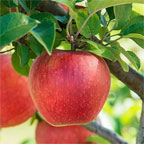- Q.I Have Recently Moved A Black Walnut Tree That Was Very Difficult To Grow Anything Under And The Grass Seems To Be Having A Hard T - The grass under the tree does not seem to grow and will not fill in. It seems as if the ...
- Q.Gathering Black Walnuts For Starting Seedlings - When do you gather the nuts from the tree to start seedlings
- Q.Can You Leave The Husk On A Black Walnut For Planting? - Hi, I was wondering if it is absolutely necessary to remove the husks from black walnuts before planting them. Does ...
- Q.Walnut Tree – Worms - I live in South Africa, and moved into a house with a walnut tree. Year 1, the walnut tree produced ...
- Q.Gardening Under A Black Walnut Tree - I recently moved into an apartment that has a garden available for us. The area is minimally 24x24 ft. I've ...
Q.I Have Recently Moved A Black Walnut Tree That Was Very Difficult To Grow Anything Under And The Grass Seems To Be Having A Hard T
The grass under the tree does not seem to grow and will not fill in. It seems as if the tree has caused permanent damage to the soil?
- A.
Not permanent, but long term. This article will help:
https://www.gardeningknowhow.com/garden-how-to/info/allelopathic-plants.htm
Here is an article to help you plant in the area until it has been remediated:
https://www.gardeningknowhow.com/edible/nut-trees/black-walnut/black-walnut-compatible-plants.htm
Was this answer useful?00
Q.Gathering Black Walnuts for starting seedlings
When do you gather the nuts from the tree to start seedlings
- A.
You will do this when they drop from the tree in the fall. After planting, they won't germinate till spring. As long as the seed does not feel empty when you remove the husk, it should be viable.
https://www.gardeningknowhow.com/edible/nut-trees/black-walnut/planting-black-walnut-trees.htm
Was this answer useful?00 Q.Can You Leave The Husk On A Black Walnut For Planting?
Hi, I was wondering if it is absolutely necessary to remove the husks from black walnuts before planting them. Does this happen in the wild? Also, I wanted to start them in pots vs. the ground. Any tips on this? Are there benefits to planting the large walnuts vs. the small? I've collected a few hundred on the farm property I just purchased. Thank you.
- A.
All but one source I read said to remove the husks then soak the nuts in water. Discard the "floaters." They need a cold period so you'll need to chill your seeds before planting in pots. If planting in the ground you could do it right away. Since you don't want to hull the nuts, here is the extension publication that said you don't need to:
https://www.ksre.k-state.edu/historicpublications/pubs/Sc013.pdf
Every couple of years the trees produce large nuts. When planting, plant them 2 to 3 inches deep. If planting several in a container, place them as far apart as possible. They will form a tap root quickly, so you won't want to keep them in a pot for too long.
Was this answer useful?00 Q.Walnut Tree – Worms
I live in South Africa, and moved into a house with a walnut tree. Year 1, the walnut tree produced walnuts. As this was my first year with the tree, I didnt pick too many nuts, and the nuts I did pick I gave away - so didnt take note of the quality nut produced. Year 2, I was surprised the tree produced nuts again, as I had read it would not do so every year. The first haul I picked just under 300 nuts. When opening the nuts, some of them had worms in them. Generally 1 worm in the nut. Some of the worms were bright red. Some were white. What kind of worms are they? What can I do for the tree so that next year the nuts are worm free?
- A.
These articles should help:
https://www.gardeningknowhow.com/edible/nut-trees/walnut/walnut-tree-harvesting.htm
https://www2.ipm.ucanr.edu/agriculture/walnut/navel-orangeworm/
http://www.uky.edu/Ag/Entomology/treepestguide/walnut.html
https://extension.entm.purdue.edu/publications/E-33.pdf
http://ipm.ucanr.edu/PMG/PESTNOTES/pn7430.htmlWas this answer useful?00 Q.Gardening Under A Black Walnut Tree
I recently moved into an apartment that has a garden available for us. The area is minimally 24x24 ft. I've been taking out the overgrowth and the soil seems good, currently working on creating a compost bin. The only thing that worries me is the the plot is right under a giant black walnut tree. We can't cut it down or move the garden area. I guess I'm asking for what types of edible plants can I grow and how do I combat the falling nuts so they don't damage any plants? Any other advice is welcomed as this is my first official in ground garden (before was just in containers). Thank you in advance.
- A.
ou might consider raised beds with fresh soil and then you wouldn't have to worry about the juglone that is produced by the black walnut tree. However, you would need a barrier on the bottom so the roots don't go into the ground.
Also, the shade under the tree might be too much for vegetables, which need full sun. These articles should help:
https://www.gardeningknowhow.com/edible/nut-trees/black-walnut/black-walnut-compatible-plants.htm
https://www.canr.msu.edu/news/growing_vegetable_gardens_near_black_walnut_trees
https://www.gardeningknowhow.com/edible/vegetables/vgen/shade-vegetables.htm
https://www.gardeningknowhow.com/edible/vegetables/vgen/raised-vegetable-gardens.htm
When the nuts fall in autumn, you can cover the plants, if possible, with screening to keep the nuts out of the garden. Leaves also need to be removed.
Was this answer useful?00



